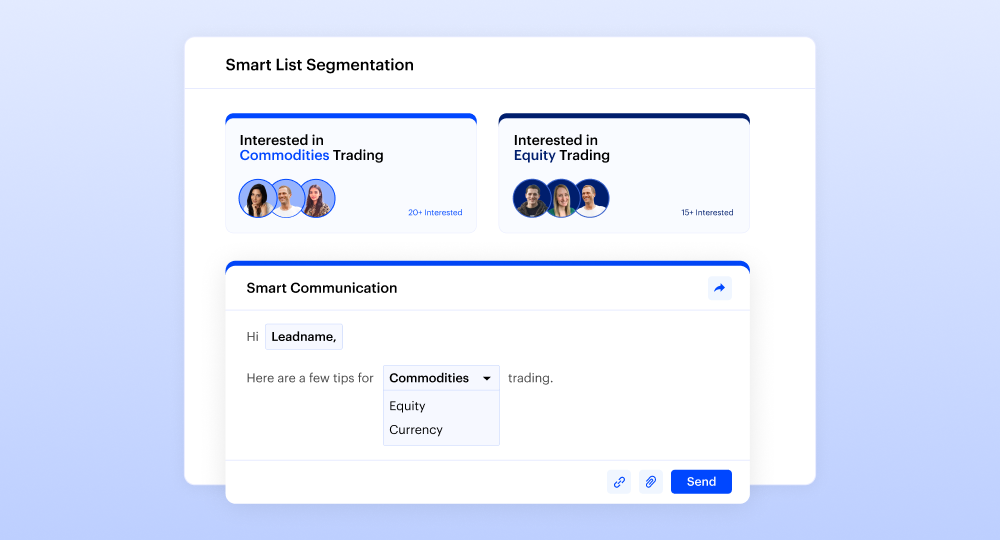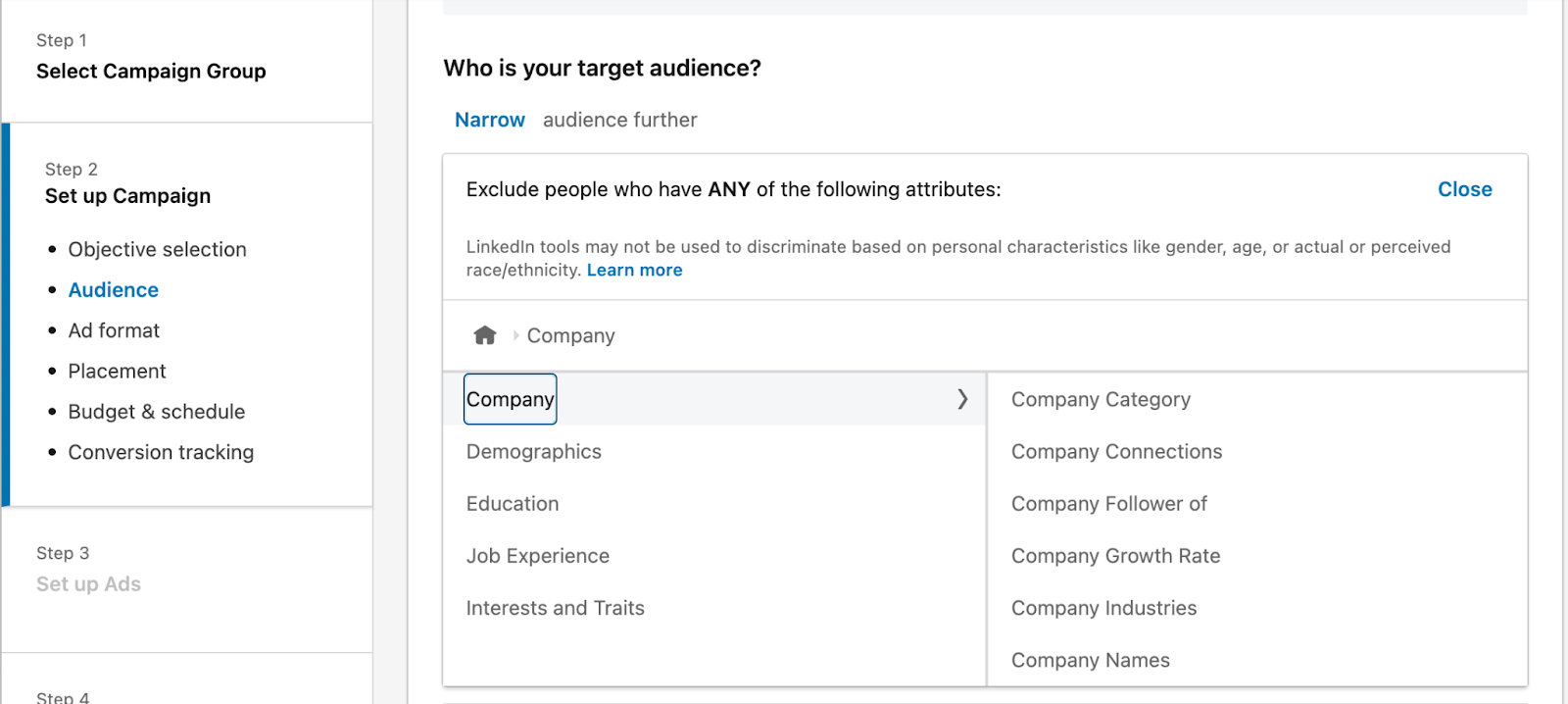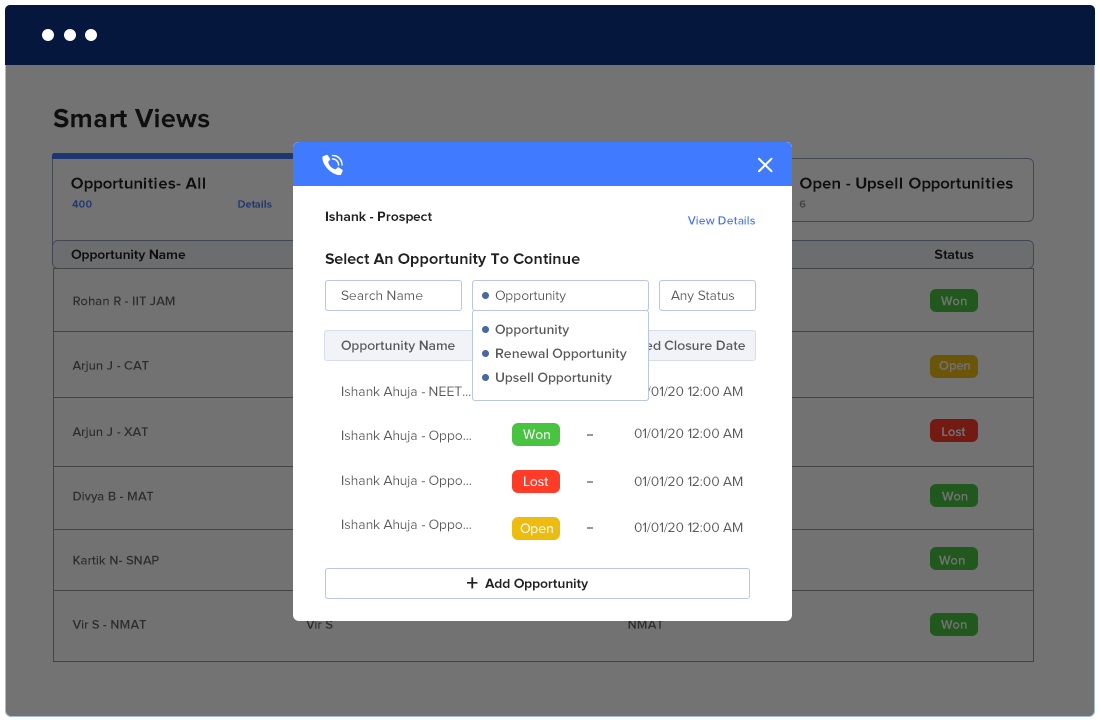Three departments play a crucial role in reducing customer acquisition costs (CAC).
That’s,
- Marketing
- Sales
- Service
departments.
This article will discuss how each department can contribute to an optimal CAC. Let’s start with the marketing department first.
How Can the Marketing Department Contribute to Reducing CAC
First things first, it starts with understanding your customers inside out.
Conduct thorough market research to understand your ideal customer profile (ICP). It includes demographics, firmographics, buying behaviors, and pain points.
Once you’ve understood your ICP, it’s time to explore some sure-shot strategies to drive results.
1. Segment customers
Segment your audience based on purchase history, interests, and behavior. This allows for targeted messaging and campaigns that are more likely to convert.
CRM software that offers customer segmentation would be your best bet for creating separate campaign lists. You can then drive targeted campaigns over various channels and track the conversion journey thereon.

2. Invest in SEO
SEO, or Search Engine Optimization, is a way of making content easily accessible to search engines like Google or Bing while educating or providing value to the reader.
Companies spend heavily on Ads. But if you invest in SEO, your overall marketing spend in acquiring new customers will decrease, as inquiries or business generated organically or via Google Search is technically free.
For example, we drive $100.5K worth of visitors through SEO per month. Had SEO not been in place for us, we would have spent a similar amount in acquiring those visitors through pay-per-click ads.
3. Milk your assets
The idea here is to make the most out of your existing content. For this, you can:
- Repurpose blog articles into downloadable PDFs. You get leads at no cost, and you can then nurture them.
- Create user-generated content. Encourage customer testimonials, reviews, and social media mentions.
- Co-produce or co-promote your content. If you share a common audience base, then this could be a cost-effective way to reach a broader group.
Further, you can implement A/B testing for marketing campaigns, landing pages, and ad copy. This allows you to test different variations and identify the most effective elements that drive conversions and reduce CAC.
4. Ensure 100% lead capture
Are people dropping in inquiries, but you’re not getting them? If this is the case, then the first thing you should do is fix your lead capture mechanism.
Ensure that all your channels of business inquiries or integrations are working fine and you’re able to capture leads from them in real-time.
If this is not happening, then you’ll be wasting a chunk of your marketing spend without actually getting customers.
Keep an eye on lead generation metrics on a daily and weekly basis, and immediately troubleshoot if you find a steep decline in the number of inquiries.
5. Try ABM or account based marketing
If you’re in the B2B space, for high-value accounts, implement an ABM strategy. This involves targeted campaigns, personalized outreach, and content explicitly addressing their unique needs, leading to higher conversion rates.
Pro tip: Your CRM also provides account-level details—for instance, a list of leads from the same company. For large enterprises, if you have a long list of contacts, you can tailor your messaging accordingly and run ABM campaigns through the CRM itself.
LinkedIn is also a great platform for running ABM campaigns because it allows company-level ad targeting.

6. Attribution modelling
Customer source attribution gives you a true picture of how much a campaign or lead generation source contributes to your company’s growth.
With this information at hand, you can allocate more of your budget to the most impactful channels.
How Can the Sales Department Contribute to Reducing CAC
“Process efficiency” is the key when it comes to sales, whether it involves human intervention or not.
Here are the ways in which CAC can be reduced by optimizing various sales processes.
7. Prioritize higher-intent prospects
Implement a lead scoring system that assigns points based on a prospect’s fit with our ICP. This helps prioritize leads and ensures sales reps focus on the most promising ones.
You can assign scores based on various attributes like product selected, added in cart, browsed pricing or reviews, etc.
8. Develop a referral program
A well-structured referral program incentivizes satisfied customers to recommend your product or service to others. This cost-effective strategy leverages the power of word-of-mouth marketing and qualified leads.
9. Fix the leaks within your sales funnel
Be on top of your sales metrics, such as lead-to-sales conversion rates. Also, the conversion rates for various stages of the sales funnel should be tracked regularly. Take corrective action if you find the conversion rate dropping below the average at any particular stage of the funnel.
You’ll notice that by fixing the internal processes alone, you could win more customers.
10. Actively upsell and cross-sell
By understanding customer needs and purchase history, you can recommend relevant upsells or cross-sells. This increases customer lifetime value (CLTV) and reduces the overall cost of acquiring new customers in the long run.
CRM software gives you upselling and cross-selling signals based on the activities of your customers and leads on your website, ads, and other marketing assets.

How Can the Service Department Contribute to Reducing CAC
The service department can play a significant role in reducing CAC by focusing on increasing customer retention and CLV (Customer Lifetime Value).
11. Build a tight-knit customer community
Being a part of an elite community matters to many people. You can leverage this human tendency to build an exclusive user-only or member-only community to attract buyers.
Tesla’s owner club for various states is an example of this approach.

12. Collaborate with product teams
Apart from analyzing customer feedback and acting upon it, work closely with product development teams to share their feedback and insights. This can lead to product improvements that address customer pain points and increase satisfaction, ultimately reducing churn.
Building a Tight-knit Customer Acquisition Team
Your marketing, sales, or service teams alone cannot reduce the acquisition cost. They need to collaborate and devise strategies for the overall organization’s growth. For this,
- Define your ICP and float it across the departments. Even better, let these three teams collaborate to define the ICP.
- Track key metrics like sales cycle, acquisition channel, number of interactions to convert a customer, LTV, average retention period, etc., and share them transparently with the team.
- Promote open communication within the team. Encourage team members to share ideas, ask questions, and provide constructive feedback.
- Finally, make customer data accessible to your teams and ensure the implementation of data-driven acquisition strategies. Use tools like CRM, marketing automation, sales intelligence, and ticketing systems to improve performance and efficiency.
One solution that combines all marketing, sales, and service data is LeadSquared CRM.
From the time a prospect enters the system till opportunity identification, conversion, and retention, LeadSquared paints a complete picture of the customer journey.
All the stakeholders interacting with that customer—directly or indirectly—can see their status, track key metrics in real-time, and fine-tune their acquisition and retention strategies to reduce the CAC.
Contact us if you want to see how LeadSquared can help you lower your acquisition costs.









